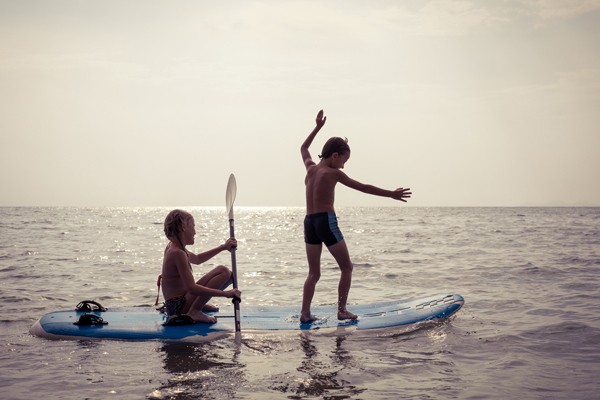Summertime – accompanied by beautiful sunny days – is when kids are encouraged to play outside. Unfortunately, like adults, kids are also highly vulnerable to sun damage. So it is imperative to take the required steps to limit harmful UV exposure and ensure that children have a safe environment to enjoy outdoor activities. Fortunately, we can do several things to limit the associated risks to our skin health.
UPF clothes
Even though a vast array of sunscreen products exist, nothing is more powerful than a physical barrier between your child’s skin and the sun. The best protection against the sun is clothing, hats, and sunglasses. Although infants younger than six months are recommended to stay out of direct sunlight, clothing that provides an ultraviolet protection factor (UPF) is often the first choice for parents. UPF ratings indicate the proportion of UVA and UVB rays that penetrate the fabric and reach the skin – differing from the typical SPF ratings, which detail the time it takes for UV-exposed skin to burn (1).
A UPF value of 50 dictates that the fabric blocks 98% of the sun’s rays. Clothing with the skin cancer foundation seal of approval or other official UPF ratings should be prioritized. Further protection is ensured when the clothes are either dark or have bright colors opposed to lighter shades, as well as being composed of unbleached cotton, or shiny polyesters which help reflect radiation (2). Although a piece of UPF clothing can be used multiple times, the protection will slowly fade as the material stretches and allows more UV rays to pass through to reach the skin.
Sunscreen
Sunscreen is one of the most highly advocated tools to protect our skin from harmful UV damage. Unfortunately, there is a wide variety of sunscreens available on the market, and the associated labeling of ingredients can be confusing. When looking for the ideal sunscreen, there are a few key factors to keep in mind.
The first thing to look out for is the SPF rating. SPF, or sun protection factor, is a rating system that informs the degree of protection achieved by a given sunscreen. For example, an SPF rating of 15 indicates that it will take 15x longer to develop a sunburn when the sunscreen is applied properly. Lower SPF sunscreens are not necessarily less effective than high SPF sunscreens, but they will require more frequent application to achieve the same degree of protection. To achieve optimal protection, use a sunscreen with an SPF rating of at least 30 (3).
There are two types of UV radiation in sunlight that can cause damage to our skin, UVA and UVB. A sunscreen with a high SPF rating will protect against UVB but not UVA. To protect against UVA radiation, look for a sunscreen labeled as “broad spectrum”. A broad spectrum sunscreen with SPF 30 or above will provide strong UV protection.
Another factor to consider when buying sunscreen is the primary active ingredients. Most sunscreens will contain either chemical or physical UV filtering compounds. Chemical filters such as avobenzone, homosalate, octocrylene, octisalate, octinoxate and oxybenzone may be associated with adverse side effects. Some studies have shown that several of these compounds have been found in the bloodstream at concentrations above the FDA’s toxic level (4).
Physical filters – minerals such as zinc oxide and titanium dioxide – are often touted as the safer option as they do not have the same associated downsides. Although these sunscreens may require more frequent application, it is best to limit exposure to chemical based sunscreens due to the potential risks associated with chemical UV filters.
The protection provided by sunscreen is not universal, and can differ between individuals based on the differences in their skin. Nevertheless, following a general set of Health Canada guidelines for sunscreen use will greatly reduce the risk of UV exposure for all children. For optimal protection and limited risk, apply sunscreen at least 15 minutes before going outside, and aim to reapply every 2 hours. In some cases when children are sweating or swimming, more frequent application may be required for optimal protection (3).
Conclusion
Rather than worrying about the risks of sun exposure in summer, everyone can enjoy time outside if we proactively plan to protect our skin. UV-safe clothing, sunscreen, and timed sun exposure provide options that allow us to safely enjoy the outdoors while limiting the risks to our skin health.
Dr. Rohan Bissoondath,
Medical Director

